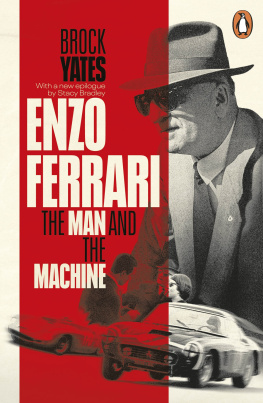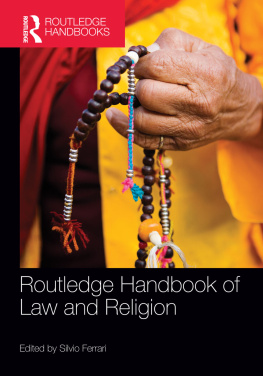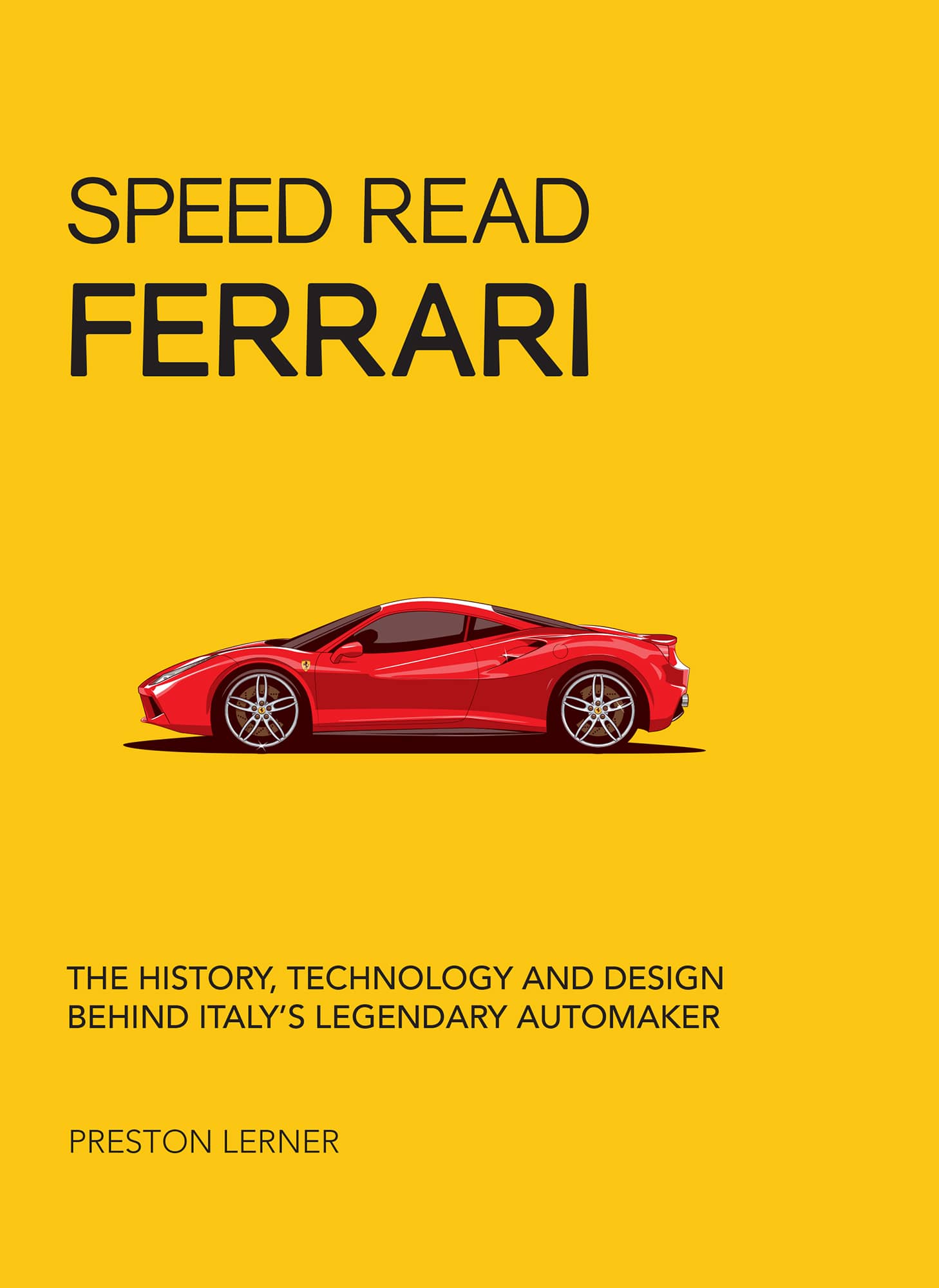SPEED READ FERRARI
THE HISTORY, TECHNOLOGY AND DESIGN BEHIND ITALYS LEGENDARY AUTOMAKER
PRESTON LERNER

INTRODUCTION
WHATS IN A NAME
Ferrari. No car comes with more cachet. None boasts a more storied history.
Ferrari. Three syllables that roll off the tongue with ineffable Italian panache. The name evokes vivid images of sleek sports cars and shark-like racers. Oh, and the sounds! The click of the fuel pump, the satisfying thunk of the shift lever finding a gear in the gated shifter, the intoxicating aria sung by a twelve-cylinder engine approaching redline.
Ferrari. The cars have been driven by celebrities and beautiful people ranging from sheiks and princes to the most exalted motorsports royalty. The belle macchine from Maranello carried them to fame, fortune, and, on occasion, death.
But alwaysalways!in Ferraris inimitable style.
From the start, the company was the corporate embodiment of its imperious founder, Enzo Ferrari. A former race car driver turned impresario of Alfa Romeos works racing team, Ferrari never aspired to be a captain of industry. No, Ferrari created his eponymous marque for the sole purpose of winning races, and he built and sold street cars only to support his passion for motorsports. This freed him to adopt an uncompromising approach to car design and a cavalier attitude toward his customers. The products of his single-mindednesssome called it obstinacywere race cars that triumphed everywhere from the Grand Prix of Monaco to the 24 Hours of Le Mans and road cars that set standards for elegance, performance, and exclusivity.
In 1969, Ferrari became part of the vast Fiat conglomerate and entered the modern industrial age. Once built by hand by the dozen in a grimy, cramped factory, cars are now stamped out by the thousands in a state-of-the-art assembly plant filled with robots rather than artisans. And yet, despite all the changes, every car emblazoned with Ferraris famed prancing horse is sprinkled with some of the same fairy dust found in the 166 MM Barchetta, the 250 GTO, and the FS70H thats still winning Formula 1 races to this day.
A LEGEND IS BORN
A LEGEND IS BORN
ENZO ASCENDANT: THE PREWAR YEARS
Few car companies embody the character of their founder more faithfully than Ferrari. This is a marque with a famous split personality, obsessed by street cars at one end of the spectrum and race cars at the other. So, too, was Enzo Ferrari himself riven by contradictionscrude yet courtly, callous yet affectionate, quick-thinking yet pig-headed, narrow-minded yet larger than life. He was born in 1898 in the northern Italian town of Modena, the son of the owner of a small machine shop. After World War I, he moved to Turin and found work at a company that stripped war-surplus trucks down to bare chassis. He immediately started racing, with modest success, and soon finagled a position at Alfa Romeo. Ferrari quickly made himself indispensable to the burgeoning company, selling cars and poaching engineers. Although he wasnt a first-class driver, his racing experience helped him persuade several wealthy enthusiasts to bankroll the formation in 1929 of a private race team, Societ Anonima Scuderia Ferrari. In 1933, Scuderia Ferrari became Alfa Romeos works operation, with Ferrari presiding over a race program that featured luminaries such as Tazio Nuvolari and Achille Varzi. Relations with Alfa Romeo soured during the late 1930s, as Mercedes-Benz and Auto Union dominated Grand Prix racing. Ferrari returned to Modena to form a machine-tool company he named Auto Avio Costruzione. But he couldnt resist the lure of racing, and he commissioned a pair of Fiat-based entries for the Mille Miglia in 1940. Both of the so-called 815s led their class. Neither finished. Then came World War II and the end of the prologue of the Ferrari story.
FUN FACT
Ferraris greatest victory as a driver, in the Coppa Acerbo in 1924, earned him a seat in an all-conquering Alfa Romeo P2 Grand Prix car. But he fell illor, some say, lost his confidencebefore he could drive it, and he raced only intermittently thereafter.
HISTORICAL TIDBIT
During World War II, Italian officials ordered Ferrari to move his factory out of Modena in the hope of safeguarding it. Ironically, his new factory in Maranello was pummeled by three Allied bombing raids.
KEY PERSON
Ferrari was instrumental in enticing legendary engineers Luigi Bazzi and Vittorio Jano from Fiat to Alfa Romeo in the 1920s. After the war, both men worked for Ferrari in Maranello.
A LEGEND IS BORN
STAKING A CLAIM: 1947 TO 1969
Its tempting to think of the 1950s as Ferraris golden years because so many immensely valuable cars date from this era. But these cars are so collectible largely because so few of them were built. Ferrari painstakingly assembled running chassis by hand, while the bodies were designed and built elsewhere. It wasnt until 1958 that the factory got its first assembly line (to use the term charitably). In 1960, a total of 306 cars were built in Maranello; GM knocked out more than that in an hour. But if Ferrari got off to a slow start on the production side of the business, it sprinted out of the box on the racing front. A Ferrari 166 MM won the first 24 Hours of Le Mans staged after World War II, and Ferrari 500 single-seaters swept every World Championship race in 1952. By the 1960s, though, as racing costs skyrocketed, it became clear that profits from production cars could no longer finance the entire motorsports program. Enzo spent weeks negotiating the sale of his company to the Ford Motor Company before abruptly calling things off when he realized that hed no longer be the despot-in-chief. This, after all, was a man whod fired, en masse, the directors of engineering, sales, purchasing, personnel, and the race team, in 1961 for a perceived lack of loyaltyan episode known as The Purge. But Ferrari had an ace in the hole in the form of his ties to Gianni Agnelli, the tycoon in charge of the Fiat empire. In 1969, Fiat bought a 40-percent stake in Ferrari (with an option for an additional 50 percent when Enzo died), and the marques future was assured.
FUN FACT
The first car to bear the Ferrari nameplate, the 125 S, was what Enzo called a promising failure when it debuted at Piacenza in 1947. But it won its next race, in Rome, two weeks later.
HISTORICAL TIDBIT
The 250 GT, introduced in 1954, is generally considered to be the first genuine production Ferrari. The basic chassis, which was used for the next decade, worked equally well on road and track.
KEY PERSON
In 1963, Enzo and Henry Ford II hammered out, but ultimately refused to sign, a contract that would have created two new companiesFord-Ferrari to build and sell sports and grand touring cars and Ferrari-Ford to go racing.













